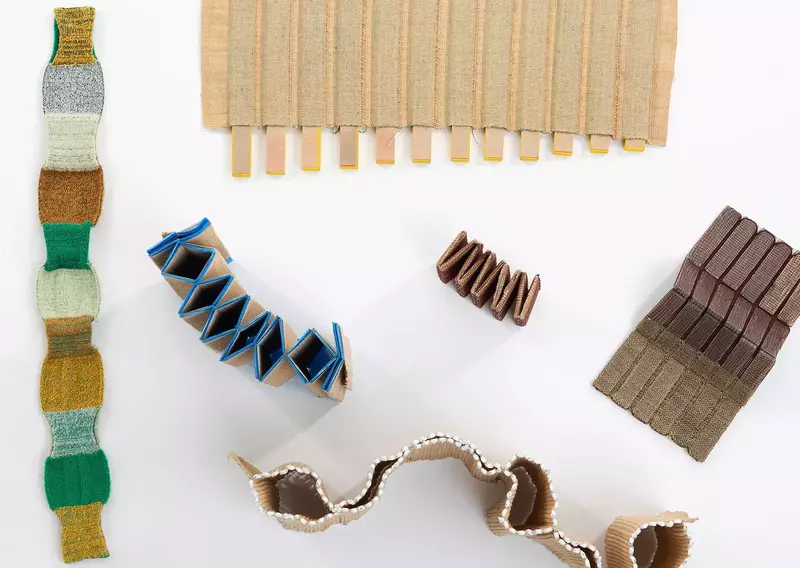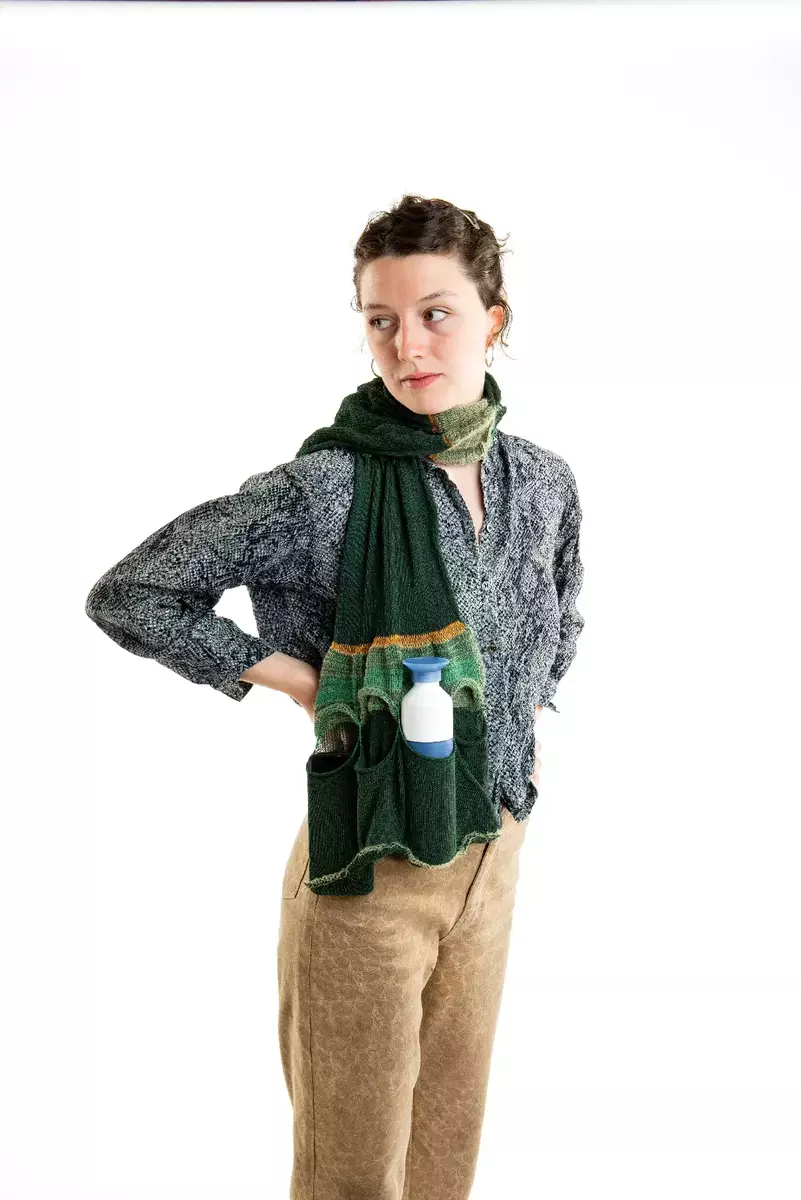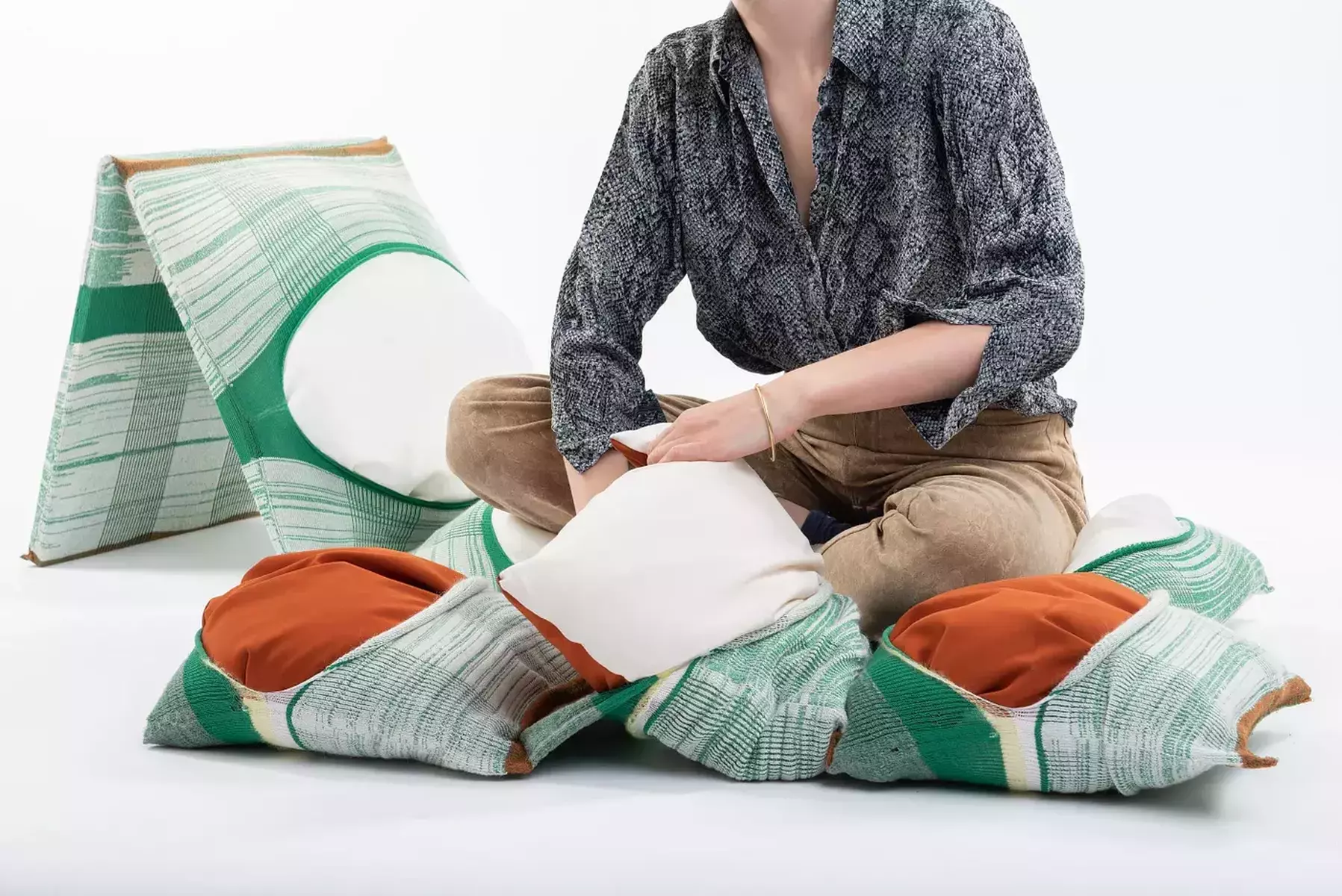Louise Dhondt
Collect to connect

Behold the motley collection of objects by textile student Louise Dhondt. A first striking category involves a number of modular structures made up of sticks and fabric of varying rigidity. But what are they really? Lilliput-sized beach screens (cute)? Wax-shrunk suspension bridges (even cuter)? Or do these artifacts also stand figuratively on their own? And if not, are we looking at prototypes of something that will later emerge as a utilitarian object? This ambiguity, both in scale and function, does not quite resolve itself in the current presentation.


Take that other family: elongated knitted waves, begging to be intertwined like a rat king, on the one hand seductive in their tactility, and on the other, after some braiding, eager to be more than just a thing. Those who like to fuel the imagination can consult a photo guide, which suggests a few possible uses: fashionable element, bottle holder, tool belt... The motif of the pouch is also found in the third family, where geometric shapes are enclosed in a tight straitjacket of yarn. However, the yarn is also (literally) open to other ideas. Above all, try it for yourself. Anything can nest here, throw its weight around, sag, bulge.